R Mandel
Re-direction of maternal behaviour in dairy cows
Mandel, R; Nicol, C J
Authors
C J Nicol
Abstract
In the milk producing industry, most aspects of maternal behaviour are discouraged, but milk production is actively maintained in the absence of the calf. The process of milk let down, is mediated, at least partly, by oxytocin, which has been shown to play a central role in facilitating maternal bonding (i.e. attachment). Here we show that cows express an elevated need for tactile stimulation, as shown by high utilization of automated brushes, in the first weeks following parturition. To this aim, we followed the use of automated brushes by 136 cows across 305 days from the time of calf separation. On the day that followed parturition, 90% of cows used the brush, for an average duration of 357.6 ± 456.7 s/d. In the following weeks, the average daily duration of brush usage declined to an average of 108.4 ± 142.9 s/d for the rest of the lactation period (i.e. 305 days), with the percent of cows using the brush decreasing to an average of 81 ± 39%. Increased usage of the brush was also documented in the hour following each milking session (on average, 12% of the cows used the brush for 6.2 s/h), compared to the hour that preceded milking (on average, 8% of the cows used the brush for 4.7 s/h). The position of the brush (i.e. when installed next to the feeding bunk or on the opposite side of the cowshed), did not affect usage patterns, suggesting that 1. the increased use of the brushes during this time period cannot be simply explained by the higher need for energy during the first weeks following calving and the incidental use of brush located next to the feed bunk and 2. that the motivation of cows to use the brush following parturition, when expected to be in a negative energy balance, exceeds the energetic cost involved in utilizing distant brushes. The fact that brush usage (in both near and distant brushes) was found to be at its peak following parturition, and decrease rather than increase in the weeks following parturition, when energy resources are slowly recovering, further supports our hypothesis. Our results suggest that cows may re-direct their need to engage in contact with their calf (i.e. a process aimed to facilitate maternal bonding) towards an object.
Citation
Mandel, R., & Nicol, C. J. (2017). Re-direction of maternal behaviour in dairy cows. Applied Animal Behaviour Science, 195, 24-31. https://doi.org/10.1016/j.applanim.2017.06.001
| Journal Article Type | Article |
|---|---|
| Acceptance Date | Jun 6, 2017 |
| Publication Date | Oct 1, 2017 |
| Deposit Date | Aug 21, 2018 |
| Journal | Applied Animal Behaviour Science |
| Print ISSN | 0168-1591 |
| Publisher | Elsevier |
| Peer Reviewed | Peer Reviewed |
| Volume | 195 |
| Pages | 24-31 |
| DOI | https://doi.org/10.1016/j.applanim.2017.06.001 |
| Public URL | https://rvc-repository.worktribe.com/output/1390414 |
You might also like
An analysis of the welfare of fast-growing and slower-growing strains of broiler chicken
(2024)
Journal Article
The Gordon Memorial Lecture: Laying hen welfare
(2023)
Journal Article
Downloadable Citations
About RVC Repository
Administrator e-mail: publicationsrepos@rvc.ac.uk
This application uses the following open-source libraries:
SheetJS Community Edition
Apache License Version 2.0 (http://www.apache.org/licenses/)
PDF.js
Apache License Version 2.0 (http://www.apache.org/licenses/)
Font Awesome
SIL OFL 1.1 (http://scripts.sil.org/OFL)
MIT License (http://opensource.org/licenses/mit-license.html)
CC BY 3.0 ( http://creativecommons.org/licenses/by/3.0/)
Powered by Worktribe © 2025
Advanced Search
